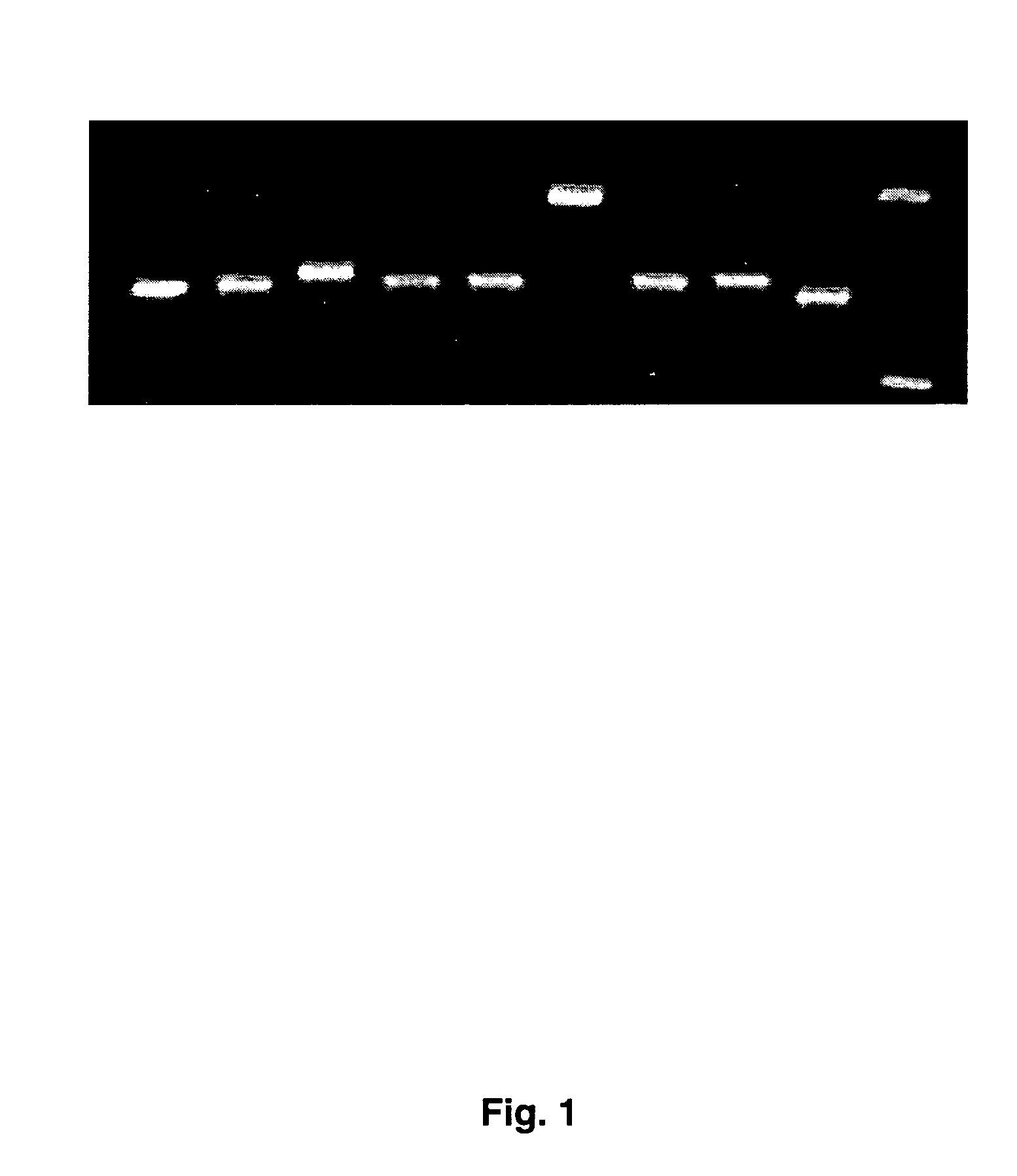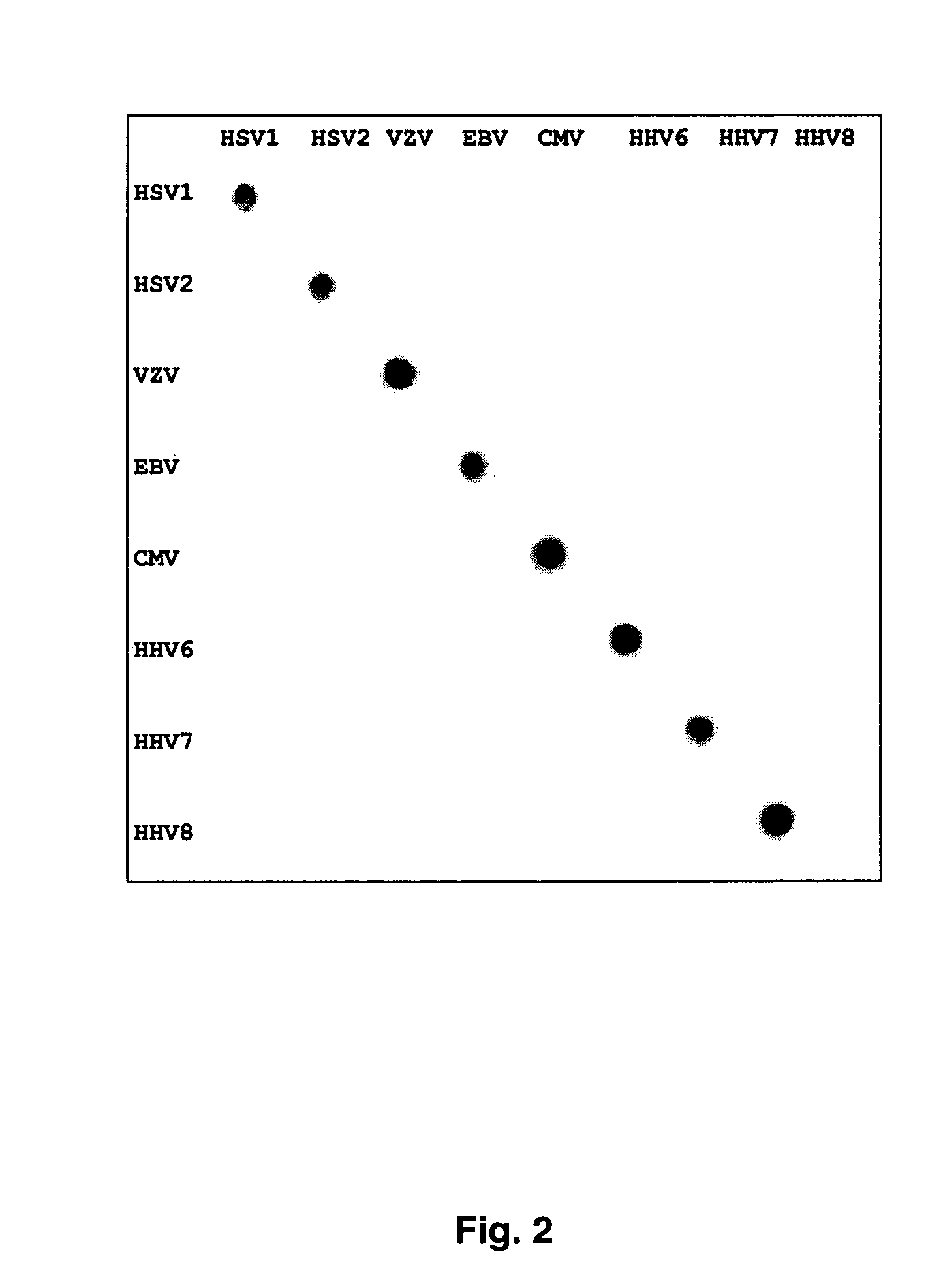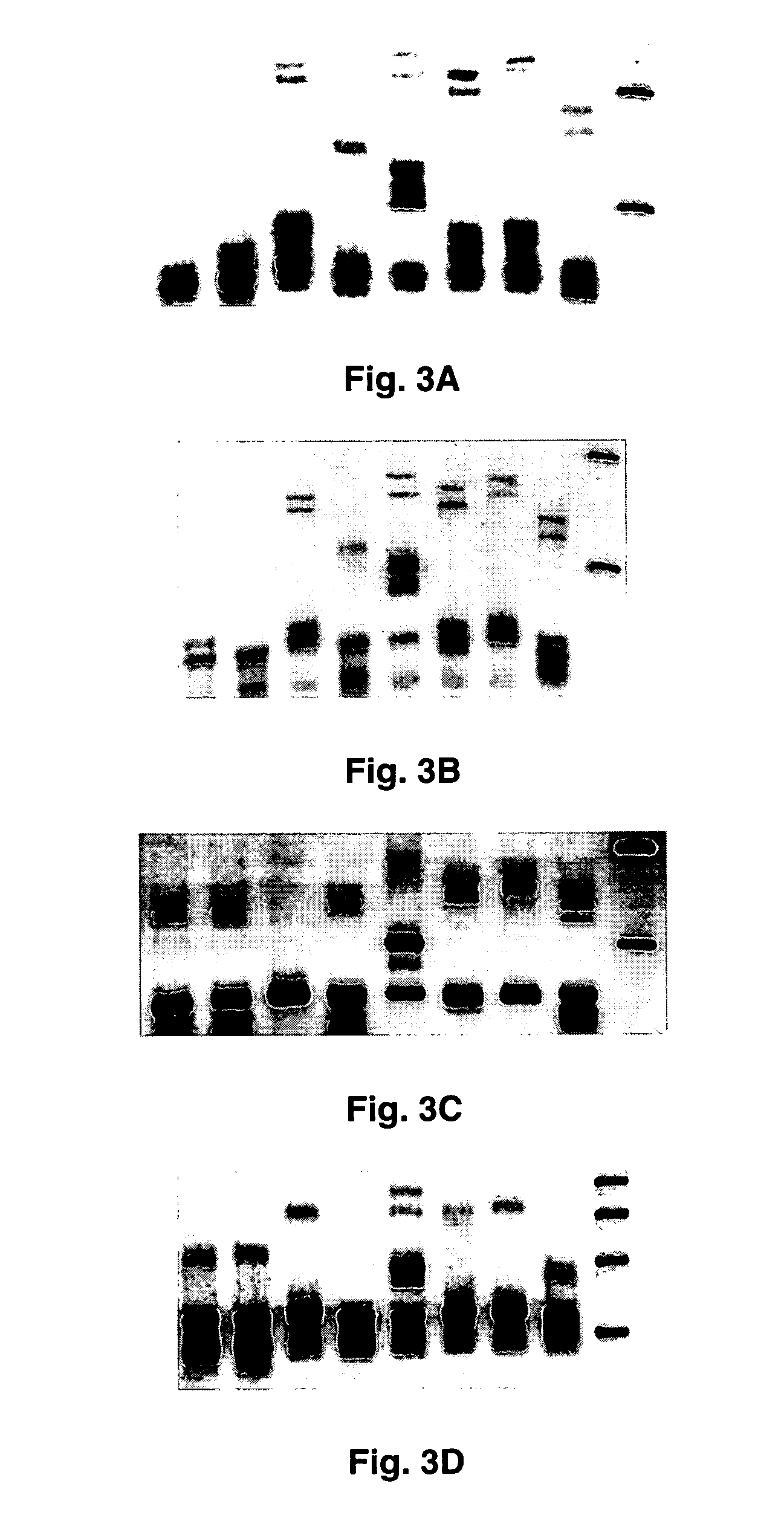Clinical assays for the detection and typing of human herpesviruses
a technology of human herpesvirus and clinical assays, which is applied in the field of clinical assays for the detection and typing of human herpesviruses, can solve the problems of needing improvement in the current methods of herpesvirus detection such as viral culture and polymerase chain reaction (pcr), and achieves the advantages of automation, rapid detection of human herpesviruses, and superior test cycle time
- Summary
- Abstract
- Description
- Claims
- Application Information
AI Technical Summary
Benefits of technology
Problems solved by technology
Method used
Image
Examples
example 1
Clinical Samples
[0053]Clinical samples include HSV-1-, HSV-2-, and VZV-positive herpetic vesicle fluids, lymph node tissues from EBV-positive Hodgkin lymphoma, peripheral blood from EBV-positive infectious mononucleosis, CMV-positive bronchoalveolar lavage fluid, skin biopsies of HHV-8-positive AIDS-associated Kaposi's sarcoma, and pleural fluid from HHV-8-positive AIDS-associated primary effusion lymphoma.
example 2
Pan-Herpes PCR
[0054]Herpesvirus standard DNA was obtained from the following sources; HSV-1 (clinical isolate from University of Texas Medical Branch, Galveston, Tex. (UTMB)), HSV-2 (UTMB clinical isolate), VZV (Ellen strain, ATCC, Rockville Md.), EBV (B95-8 (type 1), Jijoye (type 2), ATCC), CMV (AD169 strain, ATCC), HHV-6 (U1102 strain (type A), gift of Dr. Philip Pellett, CDC; Z-29 strain (type B), Advanced Biotechnologies, Columbia Md.), HHV-7 (H7-4 strain, Advanced Biotechnologies), and HHV-8 (BCBL-1, NIH AIDS Reagent Program, Rockville Md.).
[0055]Pan-herpes PCR is carried out as follows: 10 ng of purified standard or 0.5 ug of sample DNA was added to DNA EasyStart PCR tubes (Molecular Bioproducts) with Taq DNA polymerase (Sigma). Primers used for the PCR are shown in Table 2. First round of PCR with primers 1-4 and 7-8 was carried out as follows: 2 minutes 40 seconds at 94° C.; 55 cycles of 94° C. for 20 seconds, 46° C. for 30 seconds, 72° C. for 30 seconds; followed by 72° C. ...
example 3
Preparation of Human Herpesvirus DNA Reference Clones
[0059]Amplicons obtained from each reference herpesvirus by pan-herpes PCR were cloned into the TA vector (TOPO TA cloning kit, Invitrogen). Half to two microliter PCR product, 0.5 μl 1M NaCl, and 0.5 μl vector (up to 3 μl final volume with water) were mixed and incubated at room temperature for 5 minutes. Two microliter of the mixture was then added to TOPO10 competent bacterial cells, incubated on ice for 30 minutes, and heat-shocked at 42° C. for 30 seconds. One hundred microliter of SOC was added and the suspension was shaken at 300 rpm for 1 hr at 37° C. Fifty microliters of the mixture was then spread out on ImMedia Amp Blue plates and incubated overnight at 37° C. Several white colonies were transferred into 2 ml LB broth containing ampicillin (100 μg / ml) and shaken overnight at 300 rpm at 37° C. The resulting cultures were screened for herpesvirus DNA by PCR and / or restriction fragment length analysis. Plasmids from positi...
PUM
| Property | Measurement | Unit |
|---|---|---|
| Current | aaaaa | aaaaa |
| Digital information | aaaaa | aaaaa |
Abstract
Description
Claims
Application Information
 Login to View More
Login to View More - R&D
- Intellectual Property
- Life Sciences
- Materials
- Tech Scout
- Unparalleled Data Quality
- Higher Quality Content
- 60% Fewer Hallucinations
Browse by: Latest US Patents, China's latest patents, Technical Efficacy Thesaurus, Application Domain, Technology Topic, Popular Technical Reports.
© 2025 PatSnap. All rights reserved.Legal|Privacy policy|Modern Slavery Act Transparency Statement|Sitemap|About US| Contact US: help@patsnap.com



